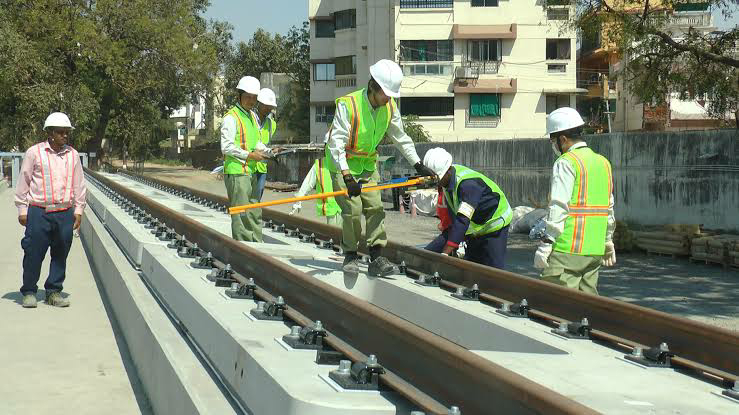Job creation potential during bullet train construction.
Introduction:
India's ambitious plan to build a high-speed rail network connecting major cities across the country has been hailed as a game-changer for the Indian economy. The project is being developed with assistance from Japan, which has extensive experience in building and operating high-speed rail systems. The construction of this network is expected to create significant job opportunities in various sectors of the economy, from civil engineering to manufacturing and services. In this post, we will explore the potential for job creation during bullet train construction in India.
Civil Engineering:
The construction of a high-speed rail network requires a massive amount of infrastructure development. From land surveying to site preparation, environmental and geological assessments to bridge and tunnel construction, civil engineering jobs are among the most crucial in the entire project. The following are some of the potential civil engineering jobs that could be created during bullet train construction in India:
1. Design and construction of high-speed rail tracks and infrastructure
2. Land surveying and site preparation
3. Environmental and geological assessments
4. Bridge and tunnel construction
5. Road and highway construction to connect rail stations to surrounding areas.
Manufacturing:
The production of rail components is a significant contributor to the overall cost of building a high-speed rail network. The manufacturing sector is one of the critical areas where jobs can be created during bullet train construction in India. The following are some of the potential manufacturing jobs that could be created during bullet train construction in India:
1. Production of rail components such as wheels, axles, and brakes
2. Manufacturing of rolling stock, including locomotives and passenger coaches
3. Production of signaling and communication equipment for the rail network
4. Fabrication of steel and concrete structures for rail stations and maintenance facilities.
Services:
After the construction of the high-speed rail network is completed, it will require a wide range of services to ensure that it is efficiently and safely operated. The following are some of the potential service jobs that could be created during bullet train construction in India:
1. Operation and maintenance of the high-speed rail network
2. Ticketing and customer service at rail stations
3. Hospitality and tourism services for passengers
4. Logistics and supply chain management for rail operations.
Education and Training:
Developing and delivering vocational training programs for workers in the construction and rail industries is essential to building a skilled workforce. Training in safety procedures and emergency response for rail workers is also crucial. The following are some of the potential education and training jobs that could be created during bullet train construction in India:
1. Development and delivery of vocational training programs for workers in the construction and rail industries
2. Training in safety procedures and emergency response for rail workers
3. Curriculum development and training for engineering and technical staffl.
Indirect Job Creation:
Besides direct job creation, there is potential for indirect job creation through the multiplier effect. This refers to the fact that new jobs in one sector of the economy can lead to the creation of additional jobs in related sectors. For example, the construction of a new rail station may create jobs in nearby retail and hospitality industries, as well as in transportation and logistics.
Economic Development:
The construction of a high-speed rail network has the potential to stimulate economic growth and development in the surrounding areas. Improved transportation infrastructure can increase accessibility to markets and reduce transportation costs, making businesses more competitive and attractive to investment. This, in turn, can lead to additional job creation and economic development.
Conclusion:
The construction of a high-speed rail network in India has the potential to create significant job opportunities in various sectors of the economy. The direct and indirect job creation generated by the construction of the network has the potential to stimulate economic growth and development, but this requires a significant investment in training and education programs to build the skills of workers in the construction.
